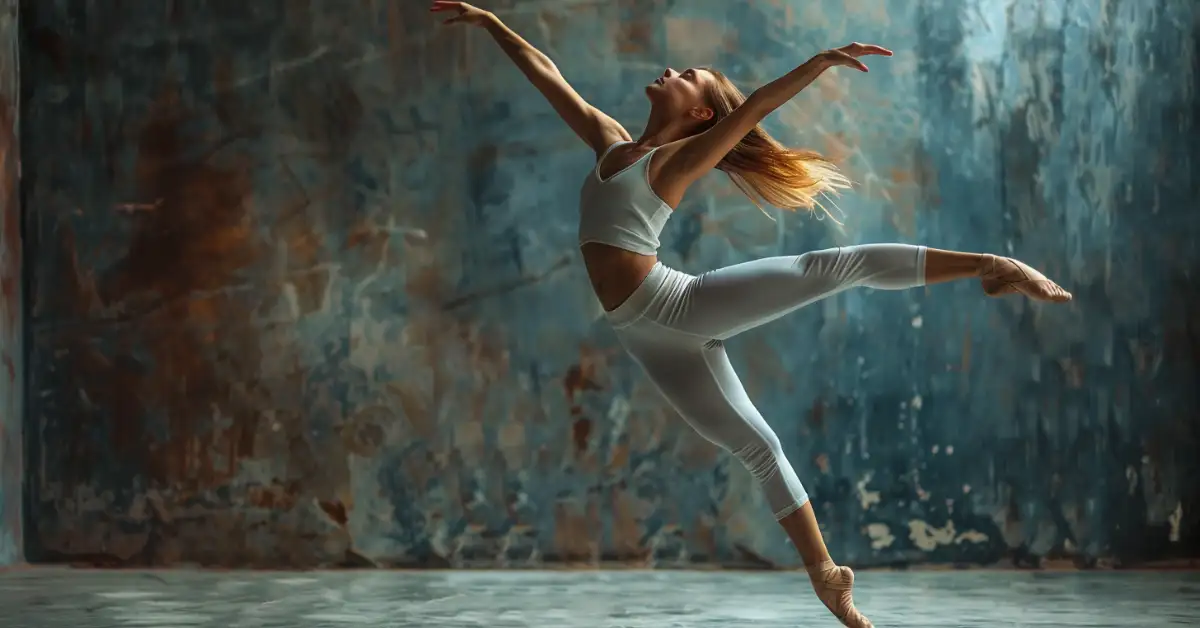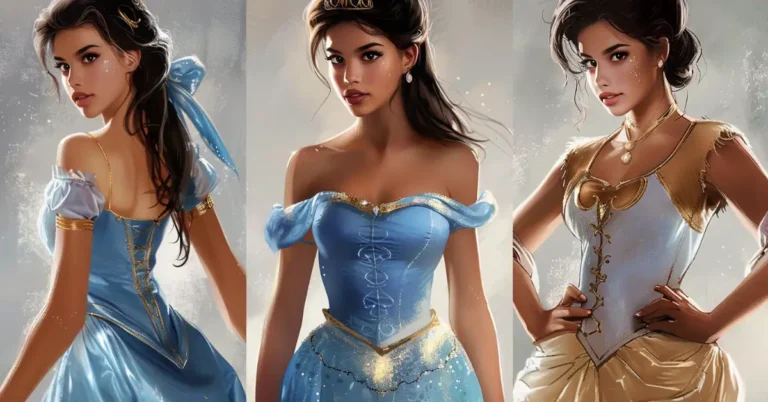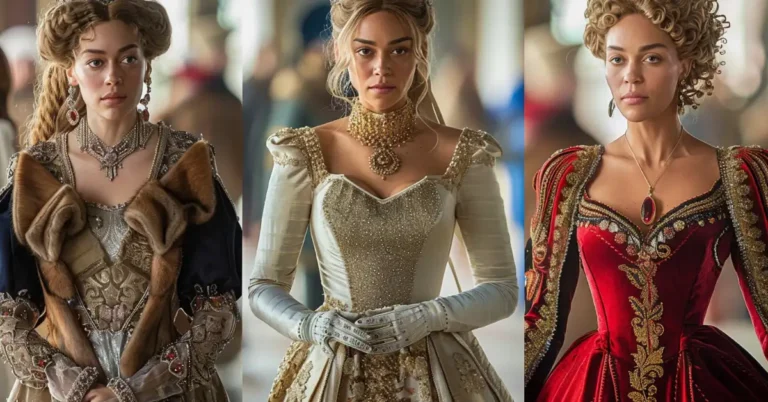Understanding “What is the Difference Between Lyrical and Contemporary Dance” can enhance your appreciation of their unique storytelling abilities. Lyrical dance, with its fluid movements, embodies the emotions of music’s lyrics, blending ballet’s precision with jazz’s expressiveness. In contrast, contemporary dance ventures into abstract expression, merging diverse styles for innovative, boundary-pushing performances.
Lyrical vs Contemporary Dance
Here is all in short about: What is the Difference Between Lyrical and Contemporary Dance!
| Aspect | Lyrical Dance | Contemporary Dance |
|---|---|---|
| Foundation | Has roots in ballet and jazz | Emerged as a response to traditional dance forms |
| Movement | Characterized by fluidity and grace | Known for abstract and unconventional movements |
| Technique | Emphasizes ballet technique | Incorporates various techniques including ballet and modern dance |
| Music | Often interprets the lyrics and mood of a song | May use a wider variety of musical genres |
| Expression | Focuses on emotional storytelling | Explores various themes and dynamics |
| Choreography | Tends to be narrative and closely follows the music lyrics | Allows for more improvisation and experimentations |
Understanding these nuances helps us appreciate the beauty of both styles. Lyrical dance captures emotions and tells a story, often reflecting the theme of the accompanying music. On the other side, contemporary dance pushes boundaries with inventive moves and dramatic expressions, drawing upon multiple dance disciplines.

Defining Characteristics
Exploring what is the difference between Lyrical and contemporary dance, it’s crucial to understand that both styles express emotion through movement but do so with distinct traits and techniques.
Lyrical Dance Traits
- Emotional Expression: Lyrical dance is deeply rooted in expressing the emotion and storytelling of music lyrics through movement.
- Technical Foundation: It borrows heavily from ballet technique and jazz technique, emphasizing grace and fluidity.
- Choreography: The dance movements are often closely tied to the music, with choreography that mirrors the song’s emotions and dynamics.
Contemporary Dance Features
- Stylistic Fusion: Contemporary dance merges elements of various dance forms, including modern, ballet, and jazz.
- Technique and Improvisation: This style often focuses on strong technical training while allowing for improvisation and the exploration of new movement ideas.
- Creative Choreography: Contemporary dance is known for pushing boundaries with unique and expressive choreography that can be abstract or narrative.

Musicality and Choreography
Talking about what is the difference between Lyrical and contemporary dance, it’s essential to consider the unique relationship each has with music and choreography. Both styles utilize music to drive their movement, but they do so in ways that highlight their distinct characteristics.
Role of Music in Lyrical Dance
In Lyrical dance, the lyrics of a song are paramount. We often see dancers expressing the story and emotion of the song lyrics through their movements. The phrasing and rhythm of the music intimately guide the choreography, with dancers weaving their actions seamlessly with melodic crescendos and decrescendos.
- Key Elements of Musicality in Lyrical Dance:
- Direct interpretation of song lyrics
- Choreography that matches the music phrasing
- Movement that conveys the story and theme of the music
Influence of Music in Contemporary Dance
While contemporary dance also connects with music, it allows for a broader interpretation. Contemporary dancers might not explicitly storytell through the music but instead use it as a soundscape to explore abstract concepts. The rhythm provides a canvas on which the choreographer paints movements, sometimes aligning with the music, other times diverging to create contrast.
- Musical Influences in Contemporary Dance:
- Music as a foundation for abstract movement
- Rhythmic patterns that influence but don’t dictate the choreography
- Use of silence or discordance to add depth to the interpretation
Creating a Narrative Through Movement
Both lyrical and contemporary dance tell a story, but the approach to narrative in each is different. Lyrical dance is often more literal, directly translating the emotion and themes from the music to the dance. In contrast, contemporary dance uses movement to suggest a narrative or convey an emotion, leaving much to the audience’s interpretation. It’s like comparing a book to a poem; one tells a clear story, while the other evokes feelings and thoughts that might be more inferential.
- Storytelling through Dance:
- Lyrical: Literal interpretation of story and emotion
- Contemporary: Evocative, leaving space for audience interpretation

Performance and Techniques
Examining what is the difference between Lyrical and contemporary dance, it’s essential to look at how they perform and the techniques involved. Each style exhibits its unique approach to expression and technicality while providing dancers the space for creativity and innovation.
Expression and Emotion in Dance
In Lyrical dance, expression and emotions are at the forefront. It’s about conveying a story or message, deeply connected to the music and its lyrics, often resulting in a performance that’s moving and relatable. Contemporary dance, conversely, emphasizes communication of abstract concepts, using the freedom of movement to express a wide spectrum of emotions without relying solely on musical lyrics.
- Lyrical: Direct emotional connection to music and lyrics.
- Contemporary: Abstract emotional expression through movement.
Technical Skills and Training
The technical aspects and training in both dance forms are rigorous but distinct. Lyrical dancers build on a strong ballet foundation, with a focus on grace and fluidity. Contemporary dancers also require solid ballet training but must be versed in modern dance and experimentation with movements, including shifts in rhythm, speed, and direction.
- Lyrical: Ballet-based with an emphasis on smooth, flowing movements.
- Contemporary: Ballet and modern techniques with a push towards dynamic and unconventional moves.
Innovation in Dance Movements
Creativity is crucial in the dance world for both styles; however, contemporary dance is where you’ll typically see more innovation in the dance movements. It’s an art form that continually evolves, often incorporating elements from other dance styles to redefine boundaries, which is less common in the traditionally nuanced movement of lyrical dance.
- Lyrical: Traditional yet expressive movements tightly linked to music.
- Contemporary: Inventive and boundary-pushing, embracing eclectic influences.

Stylistic and Cultural Impact
Diving in what is the difference between Lyrical and contemporary dance, we uncover their profound effects on the dance world. Their stylistic nuances and broad emotional expression have significantly influenced popular culture, competition, and the art of dance itself.
Influence on Popular Culture
Lyrical and contemporary dance styles have woven their way into the fabric of popular culture. Their use in music videos, movies, and television showcases a fusion of styles that resonates with a wide audience. Lyrical dance, with its expressive movement vocabulary, often tells a story or conveys the emotions of a song, impacting the way we experience music. Contemporary dance’s ability to adapt and fuse various genres has led to its frequent feature in pop cultural performances, underlining its versatility and relevance. This fusion has expanded public appreciation for nuanced dance forms and the self-expression they allow.
Adaptation in Dance Competitions
In the realm of dance competitions, both lyrical and contemporary dance have planted their flags firmly. Competitors draw upon the emotional and expressive elements of lyrical dance or the more boundary-pushing movements of contemporary dance. As a result, dance competitions have evolved to judge a range of styles, appreciating the technical precision of ballet, the fluidity of jazz, and modern dance’s inventive steps all within these performances.
Expanding Beyond Conventional Boundaries
Lyrical and contemporary dances have both played pivotal roles in expanding movement vocabulary beyond conventional boundaries. Where lyrical dance emphasizes emotional expression through fluid motion, contemporary dance seeks to defy the expected, often incorporating improvisation and unconventional nuances into its performances. This self-expression and blending of genres have transformed traditional views on dance and continue to invite both dancers and audiences to experience the art form in fresh, transformative ways.

Historical Background and Evolution
We’ve often found ourselves asking, “what is the difference between Lyrical and contemporary dance?” Both genres are expressive and emotive, but they have distinct historical paths and influences.
Origins of Lyrical Dance
Lyrical dance is a genre that blends the weight and fluidity of jazz with the technical precision of ballet. It first emerged in the 1970s, stemming from the foundation laid by modern dance pioneers. The goal was to express the emotion and storytelling conveyed by music’s lyrics through dance movements. This genre often relies on the dancer’s strong ballet background, as it incorporates its grace and linearity.
Development of Contemporary Dance
Contemporary dance represents a shift away from classical ballet and towards natural body movements. The evolution of this genre is heavily attributed to the experimental and expressive work of dancers and choreographers such as Isadora Duncan and Martha Graham in the early 20th century. Duncan broke free from the rigid structures of ballet and embraced improvisation, while Graham’s technique focused on contract and release, grounding contemporary dance in emotional expression and physical discipline.
Influential Choreographers
The landscapes of both Lyrical and contemporary dance are marked by influential choreographers who have shaped their evolution. For Lyrical dance, artists like Alvin Ailey and Mia Michaels have brought a narrative power through their choreography, blending theatricality with technique. Contemporary dance’s evolution was significantly influenced by the work of Martha Graham, whose stylistic innovations laid groundwork for future generations. Choreographers like Merce Cunningham have expanded the genre further, introducing elements of chance and technology to push the boundaries of dance as an art form.
FAQ – What is the Difference Between Lyrical and Contemporary Dance
What is the difference between dance and contemporary dance?
Dance encompasses a wide range of styles and traditions, while contemporary dance is a genre that emerged in the 20th century, characterized by fluidity, versatility, and experimentation with movement, often drawing from modern dance techniques. It’s a more abstract and innovative form compared to traditional dance styles.
What does contemporary mean in dancing?
In dance, “contemporary” refers to a genre that emerged in the 20th century, characterized by fluidity, versatility, and experimentation with movement. It often incorporates elements from various dance styles, emphasizing expression, creativity, and innovation. Contemporary dance pushes boundaries and is not bound by traditional techniques or narratives.
What is the example of contemporary dance?
An example of contemporary dance is “Boléro” choreographed by Maurice Béjart. This piece, set to the music of Maurice Ravel, showcases fluid movements, emotional expression, and innovative choreography, embodying the essence of contemporary dance with its fusion of classical and modern elements.
What is the hardest dance style?
Styles like ballet, contemporary, and jazz are often considered challenging due to technical precision, physical demands, and expressive qualities. However, the difficulty varies based on personal skillset and experience.
If you found this blog post discussing “What is the Difference Between Lyrical and Contemporary Dance” informative, feel free to drop a comment below sharing your thoughts and experiences with it. We value your feedback!
If you want to keep reading more from us, have a look at these articles.





